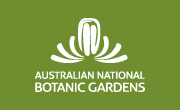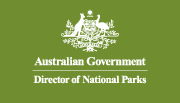Volunteer Botanical Training Program 2015
Participants and Institutions
2015 represented the twenty-third year that the Student’s Volunteer Botanical Intern Program (SVBIP) has been run. Sixteen applications were received by the closing date with ten interns successfully completing the Program in 2015.
Work Output
Output achieved by interns during 2015 was roughly equal to 66.5% of a year’s work (of an entry-level TO), based on a 240-day working year. Two interns had to finish early due to work and study commitments. Had they completed the full seven weeks productivity would have been higher (at 70%). Many supervisors provided positive feedback as to the accuracy and quality of the work achieved and the interns’ cheerful and enthusiastic approach.
Curatorial work was the major focus this year. Tasks included mounting and incorporation of vascular and non-vascular specimens, allocation of labels to specimens ready for mounting, moving of specimens to reflect changing taxon concepts, finding specimens in the collection in order to update and correct label information, sorting of fern duplicates and an impressive amount of assistance provided in Loans and Exchange.
Fieldwork
Fieldwork in 2015 was planned to follow the well-established format of previous years with a one-day field trip around the local area and a longer, residential field trip to the South Coast of New South Wales. However, we were unable to organise a suitable day to travel to Galong to talk with CMA representatives and look at rehabilitation sites was this year. It is hoped that we can return in 2016.
Due to the closure of the University of Canberra field station at Jervis Bay during 2014 the four day field trip was moved to the Kioloa Coastal Campus of the Australian National University. As a result the schedule for the field trip was modified. The trip visited the temperate rainforest at Monga National Park, followed by the Eurobodalla Regional Botanic Gardens south of Batemans Bay on the first afternoon. A staff member at the Gardens generously made himself available to show interns both the on-site nursery and herbarium, as well as talk about the Gardens in general. A day trip was required to visit Booderee National Park, a one hour and twenty minute drive from Kioloa. At Booderee Botanic Gardens Bruce Rafferty talked to the interns about the nursery and herbarium while A.J. Roberts led a Koori bush food and medicine tour. Natural Resources Management staff member Matt Hudson and colleagues were available to talk to the interns about their weed and pest management program once again. The collection and plant identification exercise was conducted wholly on the Kioloa Campus and was highly successful, with the afternoon identification session lasting until 7 pm. Despite the new location the “Treasure Hunt” style mapping and recollection exercise proved once again both enjoyable and enlightening with one intern describing the exercise as “wonderful”.
Concerns and Issues
No major difficulties were encountered during the running of the 2015 Program.
The perennial problem of accommodation for interstate and international participants remains a major issue. All but one of the participants from out of Canberra students avoided the high priced ANU colleges again this year, finding short-term share accommodation off campus, mostly with people who offered accommodation after a call-out by the program co-ordinator. The remaining interns were Canberra able to stay with friends or relatives.
Acknowledgements
The success of the 2015 Program is in no small part due to the considerable efforts of a number of Centre staff, outside academics and others who freely gave their time to present lectures and training sessions, as well as providing supervision for intern work teams. Thanks are also due to all CANBR and ANBG staff, especially those at the Herbarium, for their tolerance and enthusiasm during the course of the Program. I would particularly like to thank all those who once again provided invaluable support to the Internship Coordinator.
Bronwyn Collins
Program Coordinator
June 2015
Volunteer Botanical Training Program Participants 1993–2015
| State | Institution | Numbers |
| ACT | Australian National University, Canberra | 66 |
| University of Canberra | 19 | |
| Canberra Institute of Technology | 14 | |
| Australian National Botanic Gardens, Canberra | 7 | |
| Department of the Environment | 2 | |
| Booderee Botanic Gardens, Jervis Bay | 1 | |
| NSW | Macquarie University, Sydney | 14 |
| University of New England, Armidale | 13 | |
| University of Technology, Sydney | 10 | |
| Charles Sturt University, Wagga Wagga & Albury | 13 | |
| University of Sydney | 8 | |
| University of New South Wales, Sydney | 8 | |
| University of Newcastle | 12 | |
| University of Wollongong | 7 | |
| Southern Cross University | 1 | |
| Janet Cosh Herbarium (UW) | 1 | |
| University of Western Sydney | 1 | |
| TAFE NSW National Environment Centre Thurgoona | 1 | |
| VIC | University of Melbourne | 18 |
| Monash University | 11 | |
| Latrobe University, Melbourne | 5 | |
| Deakin University | 3 | |
| University of Ballarat | 1 | |
| Forestech, East Gippsland TAFE | 1 | |
| QLD | James Cook University | 14 |
| University of Queensland | 12 | |
| Griffith University | 3 | |
| University of the Sunshine Coast | 4 | |
| Queensland University of Technology | 3 | |
| University of Southern Queensland | 1 | |
| Metropolitan Institute of TAFE | 2 | |
| Central Queensland University | 1 | |
| NT | Charles Darwin University | 2 |
| SA | University of Adelaide | 4 |
| Flinders University | 2 | |
| University of South Australia | 1 | |
| TAS | University of Tasmania | 3 |
| WA | Curtin University | 2 |
| Edith Cowan University | 1 | |
| Murdoch University | 1 | |
| West Coast TAFE | 1 | |
| International | North America | 5 |
| Europe | 6 | |
| Asia | 2 | |
| PNG | 1 | |
| Totals | 50 | 308 |
![An Australian Government Initiative [logo]](/images/austgovt_canbr_90px.gif)




